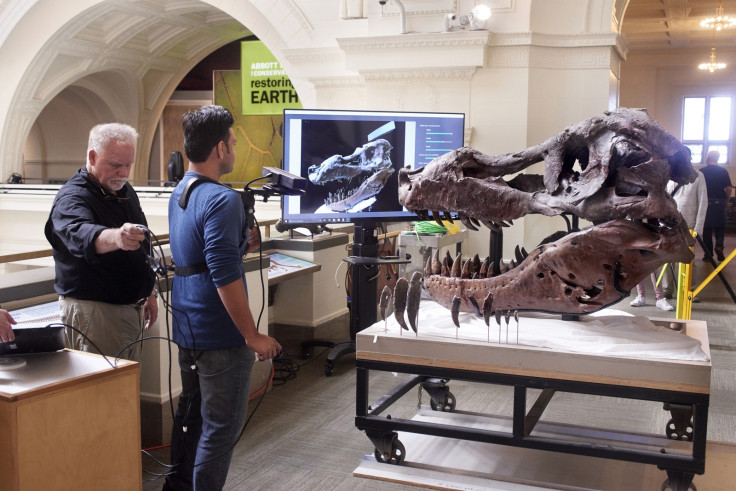Microsoft's Xbox One Kinect camera finds second life 3D-scanning dinosaur bones
Field Museum of Natural History calls in MIT's Media Lab for a novel solution to dino-tooth research.

Microsoft's ill-fated Kinect motion-tracking camera has found a surprising new life as a makeshift dinosaur bone scanner.
The forgotten Xbox One peripheral's bizarre comeback occurred after a team of forensic dentists at the Field Museum of Natural History in Chicago found themselves face to face with an enormous Tyrannosaurus rex skull and its equally sizeable dentures.
Tasked with explaining a series strange holes in the jawbone, the team found that their high-resolution scanners would not fit around the T-rex's gargantuan five-foot-long mouth, so instead they turned to MIT's Media Labs and the imaging experts from its Camera Culture group.
Camera Culture's prototype 3D-imaging apparatus also failed to reach around the dinosaur's jaws, however, leading the team to create a new set-up from free software and an amalgamation of hardware that centred around the Xbox One camera.
The combined components making up the imaging system is estimated at around $150 (£115) – a far cry from the tens of thousands it would cost for a professional set-up. The only downside is the resolution depth – with Kinect clocking in at 500 micrometres as opposed to the usual 50-100 micrometres – but that hasn't stopped Camera Culture talking up the long-term use of its Frankenstein creation.
"A lot of people will be able to start using this," said Camera Culture research scientist Anshuman Das. "That's the message I want to send out to people who would generally be cut off from using technology — for example, paleontologists or museums that are on a very tight budget. There are so many other fields that could benefit from this."
Das also noted that the team's chest-mounted Kinect-powered system could be useful in other scientific fields as well as paleontology – especially archaeology, where fragile finds could be scanned and shared remotely without risking irreparable damage.
"It's that critical size," Das continued. "If it's something really small, you can use a 3-D scanner. But if you have something stationary that's difficult to move, you just put on the [Kinect] rig and walk around."
Kinect-ing the dots?
As for the T-rex skull and its mystery holes, the scans have thrown existing theories out of the window. The skull itself is regarded as the largest and most complete T-rex skull ever to be uncovered, and it had been believed that the T-rex – humorously named Sue – died from these bite marks likely made by another T-rex,
Later evidence suggested that the holes could have been the result of an infection, with Sue presumed to have eaten a dodgy meal riddled with a virus of some kind. This, however, is now in doubt thanks to the MIT and Field Museum experts' work, as the 3D images showed that the holes taper in from the jaw like bite marks – perhaps pointing to a second scuffle with another prehistoric beast.
While video game fans quickly cooled on Kinect after its initial popularity with the Xbox 360 – and even more so with its Kinect 2.0 iteration alongside the Xbox One – it appears that the Kinect has found a new home alongside other extinct things.
© Copyright IBTimes 2025. All rights reserved.






















